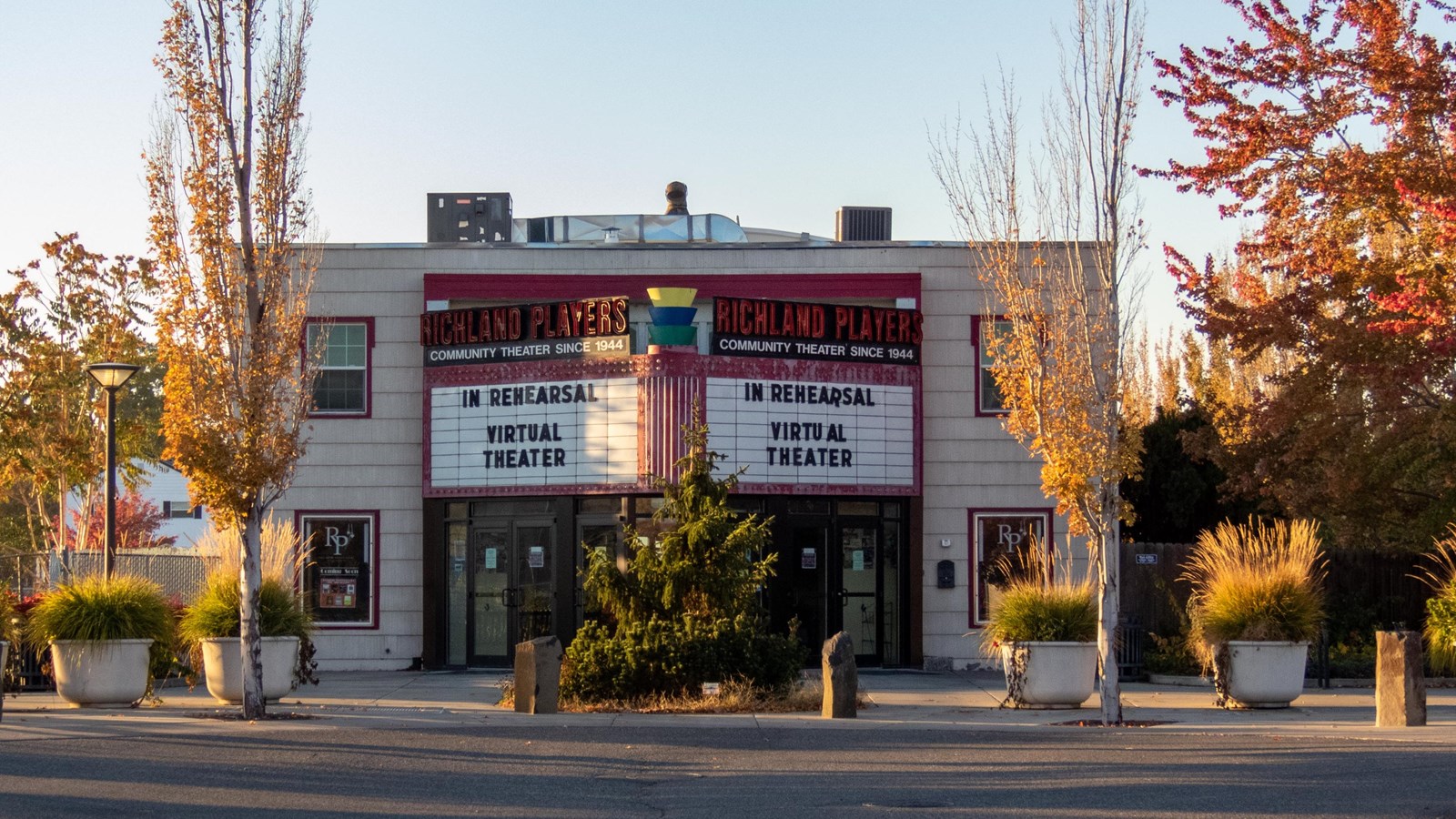Last updated: July 5, 2023
Place
Richland Players Theater

NPS/BURGHART
In a 1942 interview, President Franklin Delano Roosevelt declared movie theaters a "necessary and beneficial part of the war effort." Residents of this secret city enjoyed the latest films in this theater, built in 1944. During the week of April 14, 1944, The Richland Bulletin announced the Richland Theater program for the week included “Princess O’Rourke,” “Lifeboat,” “The Lodger,” and several other films. Hollywood contributed mightily to the Allied victory by creating popular art that explained the war’s purposes and instilled American soldiers and war workers with a sense of purpose.
Manhattan Project workers worked long hours, while secrecy rules prevented them from discussing their activities. In the 1940s, movie theaters showed more than feature films. They often played short documentary news features, called newsreels, that showed patriotic Americans on the home front and the war’s frontlines. Recreational facilities like theaters were essential components of the Manhattan Project because they provided a way to relax, build community, and provide a sense of normalcy for those living in the isolated community.
Continue Your Journey
The Richland Players, the building’s longtime and current occupant, are also a legacy of the Manhattan Project. They began as a theatrical organization in 1944, during the Manhattan Project, to bring laughter and music to the secret city. Manhattan Project workers and family members performed in the plays and have been a part of the local performing arts community in the Tri-Cities ever since.
The area surrounding the Richland Players Theater was the center of Richland during the Manhattan Project and still is today. A short walk away are the CC Anderson Department store (Roma House), Gress’s Meat Market (Frost me Sweet), alphabet homes, Richland Laundry, and the Dyer Building (Gallery at the Park). These structures were important shopping areas and community institutions during the Manhattan Project. Tour these sites or catch a play at the theater to put yourself in the shoes of a Manhattan Project worker who moved to this new atomic community for top-secret wartime work.
